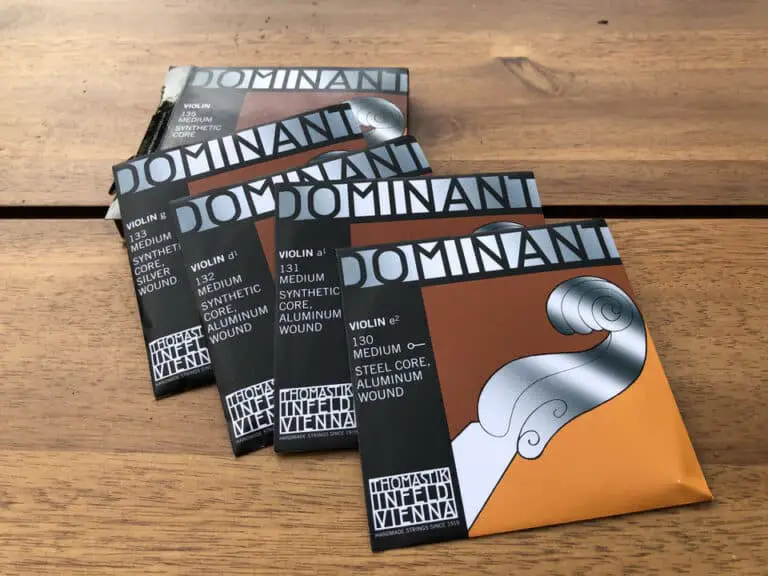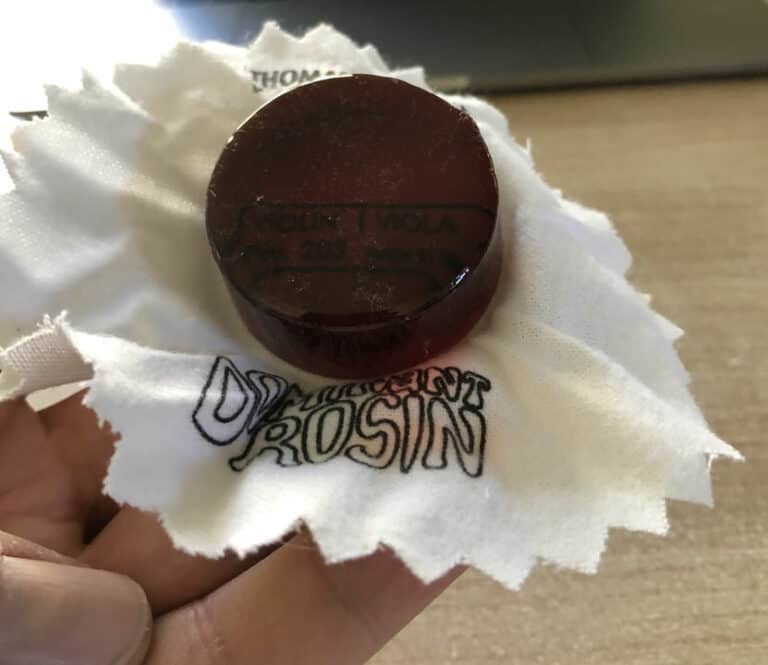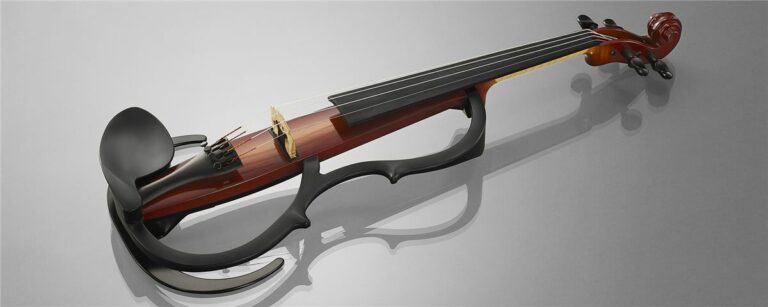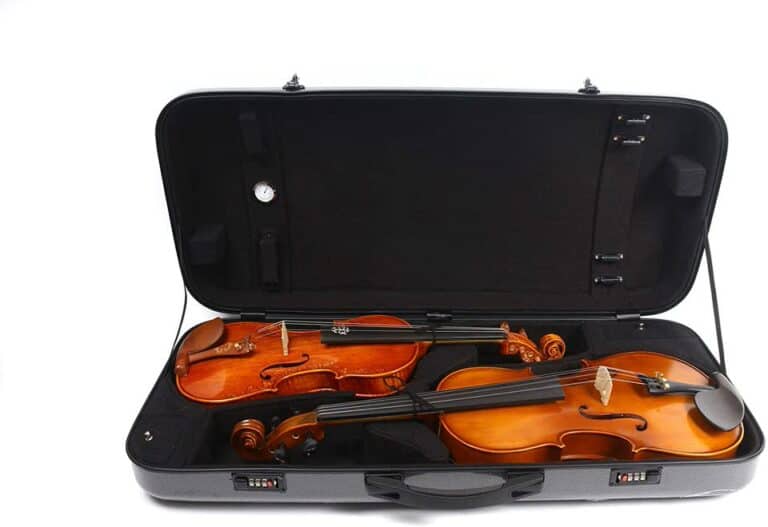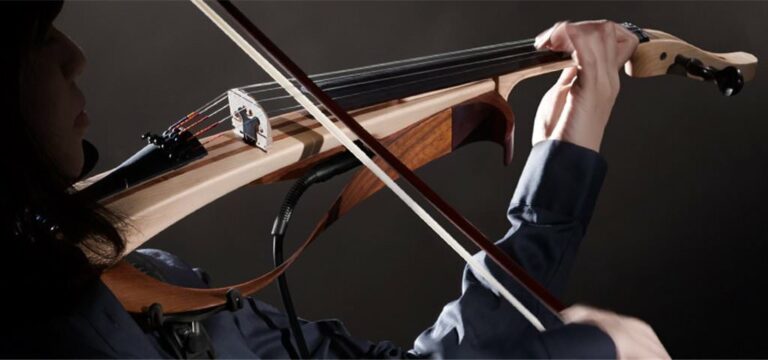What’s the Difference between a Violin and a Fiddle?
The main difference is about twenty years of training and no one minds if you spill beer on a fiddle.
Kidding aside, though, the two instruments are actually the same thing despite how radically different their musical associations are. Surely there’s some kind of difference for there to be such a distinction though, right? Well, sort of.
Differences between a violin and a fiddle
Despite the different names, the real difference between the two instruments lies in how the players use them. So, a violin and a fiddle are the same actual instruments. What sets them apart are:
- Condition (clean vs dirty),
- Set-up (pro vs DIY),
- Repertoire (classical vs bluegrass, country, folk, jazz)
- Technique (virtuosity vs self-taught)
- Sound (full loud tone vs scratchy)
But both are crucial to the music: I would not want you to believe that I look down on fiddlers; on the contrary. A world without fiddlers would be bland. As much as I enjoy Vengerov playing Tchaikovski on his great Stradivarius, I enjoy relaxing with a beer and jamming in the local pub with fiddlers.
Violin vs fiddle: qualities of the violin
A violin is (or should be) always well set up, clean, perfectly tuned, with good strings, and a good bow with perfect bow hair.
The violin is certainly the classier of the two instruments. There’s a strict standard for violin upkeep, a general tonal expectancy across much of the classical production out there, and its position in music is fairly clear-cut. You’ll rarely find a serious violin player who keeps their violin in anything less than perfect condition, not to mention there’s a good chance their instrument will likely have a higher price tag.
With that extra caution and cost, it’s no wonder violins tend to be much better kept than their fiddle brethren. String preference, for example, while highly subjective, tends toward the higher end with violins compared to fiddles, particularly with the use of traditional gut strings. Back when the violin was first invented, using animal guts to make strings was commonplace among stringed instruments, and that tradition is still kept by some players. Unsurprisingly, they’re a bit pricier than steel strings, which are particularly popular among fiddle players (though violin players certainly use them as well).
Similarly, a violin’s bow will often be more elegant and well-kept with no broken hairs. You can bet any violin player out there keeps their instrument tuned and there aren’t words to describe how insistent violin players are on keeping their prized instruments spotless– again, as anyone probably would be with an expensive instrument.
All of these tendencies aren’t just for show or tradition, of course. Classical music, as violinists often play, is often known for its complexity and precision. Violin players are often taught to such a strict standard so that they’re up to the task of playing with the robotic rigor of those who wrote the music. This “perfect” technique takes many years to nail down to the point of becoming second nature and the violin players keeping it alive certainly aren’t too keen on ditching that precise technique they worked so hard for. Prissy? Maybe. Effective? Inarguably. The innumerable talented, traditionally-taught violinists out there can testify to that.
And, of course, most of all, the difference is in the sound. The traditional violin tone strives for perfection just as much as the violinist’s playing. It’s full, it’s rich, it seldom relies on amplification, and when done correctly, it’s pitch-perfect. There’s much less room for error with such a strict guideline for playing, so some of the techniques in fiddle playing are understandably absent in the orchestra.
When you think about it, it’s no wonder violinists can get a snobby wrap from some people. The violin exudes perfection. You treat it like a violin, you play it like a violin, and you make it sound like a violin. That’s that. Then, there’s the fiddle.
Fiddle vs violin: qualities of the fiddle
The fiddle habitually has a DIY kind of maintenance, old cheap steel strings, old bow hair with broken hairs, and is dirty and covered with rosin dust.
Michael Cleveland is the perfect example of a great fiddler: I love him. See his own personal technique, his incredible sound, great swing and energy. And don’t tell me he doesn’t have a terrible technique!
This backwoods rendition of the 16th-century classical beauty is literally the same instrument, but what makes it a fiddle is how people decide to play it and the adjustments that come with that. For starters, fiddle players aren’t known to be too picky about keeping their instruments in tip-top shape or even buying top-notch instruments to begin with. It’s not as if fiddlers don’t want a great sound from their instrument, of course– there are plenty of expensive fiddles out there, and ultimately, you get what you pay for on the low end– but what constitutes a great sound is often much less picky than what a violinist seeks. There are fiddles on the market for less than $500 that would suit plenty of players just fine. Now imagine trying to sell anything to a violinist at that price. You get the picture.
In a way, though, the fiddler’s touch is a tradition of its own, even if it’s not classical like a traditional violinist. Their cheaper steel strings produce exactly the kind of tone they’re looking for, the dead, loose bow hair isn’t hurting them any, and a little dirt on their fiddle (probably) isn’t going to hurt their performance. (If you’re a violinist reading this, I apologize for any trauma that last sentence caused you.)
Maybe fiddlers would be pickier like their violin-playing cousins if their music craved that degree of perfection, but imperfection is in the very roots of music like jazz and bluegrass. Improvisation and recklessly digging into whatever you’re jamming to is a defining characteristic of these kinds of music. Play a wrong note with your violin ensemble? Good luck ever forgiving yourself. Hit a wrong note while playing jazz? Congrats on the new record deal!
Other music types, like country and folk music, don’t necessarily run on improv. Still, imagine Paganini heading to a barn in Alabama and playing a Charlie Daniels song in his finest attire on his priceless, personally-crafted instrument. The fiddle has its place just as well as the violin has its own.
The technique fiddlers use to achieve their preferred style is definitely less formal as well. Often self-taught, the fiddler’s touch has some arguably bad habits that have become the norm simply because they’re not taught otherwise. This is quite the contrast to the perfectionist violinist, of course. Having said that, technique differences aren’t all rooted in poor practice (unless you ask a violin player, of course)– much of the technique disparity boils down to style, whether or it was originally a result of misinformation or not. Vibrato and standard tuning, for example, aren’t particularly strict standards as far as fiddling goes (source).
Sound differences between a violin and a fiddle
What’s the difference between a fiddle and a chainsaw? You can turn a chainsaw off.
Only kidding, of course. The informal technique among fiddlers makes quite the informal sound, though. The whiney, scratchy sounds fiddlers aren’t afraid to let their fiddles belt out is quite the contrast to a lot of classical music, not to mention the amplification (even effects!) you’ll find a fiddler using sometimes.
The fiddle may come across as janky compared to the violin, but all these quirks and departures from tradition are responsible for its signature sound, and you can hardly fault it in that department.
What about physical differences between violins and fiddles?
So what differentiates the two then? Other than the fact you can spill beer on one of them, they both come in a few standardized sizes and have the same makeup for the most part. They both use a bow, they’re both made of wood– pretty much the same thing. The only real change on the fiddle itself is that it sometimes has a lower, flatter bridge than a violin. The bow is also known to be a bit looser. These two qualities are primarily for the purpose of playing chords, a very popular technique in the fiddle’s musical range.
Why are fiddles called fiddles?
If they’re the same instrument, why do they have different names? The truth is pretty underwhelming. To put it simply, the two words divulge from the same root, but they came from different places: violin through Italian, and fiddle from Germanic paths. That’s about it. The two words were once used interchangeably, but as styles and purposes developed, the fiddle came to be known in bluegrass at some point while the violin stayed classical.
All jokes aside, the violin and the fiddle are both respectable instruments that require a great deal of skill to wield. Whether you’re playing on a stage in a concert hall or on a platform at a country festival, you’re fundamentally playing the same instrument and so long as you have the skill to back it up, you can use it to make some lovely music.

